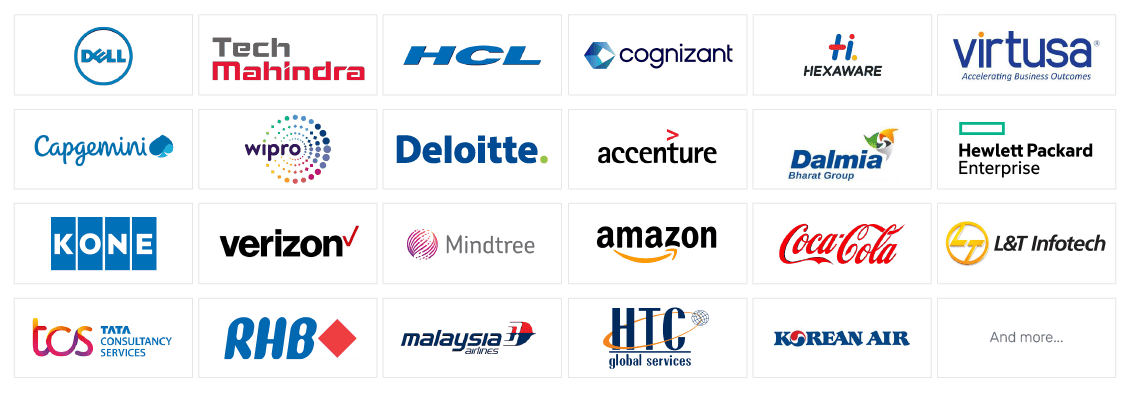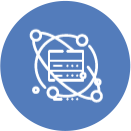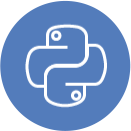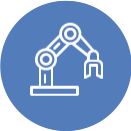Our Alumni Work At

"AI to contribute $16.1 trillion to the global economy by 2030. With 133 million more engaging, less repetitive jobs AI to change the workforce." - (Source). Data Science with Artificial Intelligence (AI) is a revolution in the business industry.. AI is potentially being adopted in automating many jobs leading to higher productivity, less cost, and extensible solutions. It is reported by PWC in a publication that about 50% of human jobs will be taken away by the AI in the next 5 years.
There is already a huge demand for AI specialists and this demand will be exponentially growing in the future. In the past few years, careers in AI have boosted concerning the demands of industries that are digitally transformed. The report of 2018 states that the requirements for AI skills have drastically doubled in the last three years, with job openings in the domain up to 119%.
FAQs
A data analytics course, in which the study of the interpretation of data, application of statistical methods, use of tools for deriving insights, and finally, making informed decisions in various industries is taught.
Aspiring data analysts, professionals on the lookout for career growth, and those looking for data-driven decision-making will be at a core benefit from taking our data analytics course.
Gurgaon is a hub for a great deal of technological work, providing exposure to industry experts and offering opportunities for networking and possible collaborations, making it an excellent place to learn and grow a career in data analytics.
Yes, there are a number of data analyst institutes in Gurgaon that offer our online data analytics courses, which afford professionals and students the opportunity to learn at their own pace and convenience.
In general, I would say prior knowledge of statistics, acquaintance with MS Excel, and basic programming knowledge is helpful, but most of our courses also accept newcomers who receive foundational preparation.
Usually, instructors hold higher degrees in data science, statistics, or other related fields and industry experiences so students receive education from professionals that are knowledgeable about the topic.
The majority of our courses include practical projects, case studies, and workshops. The aim of such lectures is to apply theories in real-world scenarios by cultivating analytical abilities.
Evaluations mostly in the form of quizzes, projects, presentations, and exams on data analytics concepts helps understand and apply those concepts into the real-world situations and case-studies in the industry.
Most of the data analytics courses offer recognized certification when completed. You also are considered highly employable once you have completed these data analytics courses with certifications.
It varies really in that some of these analytics courses take a few weeks in terms of an intensive boot camp, while others may cover several months by nature for a comprehensive program and vary according to personal preference and schedule.
Topics of this general type include data visualization and an emphasis on statistical analysis, machine learning, data mining, and programming languages like Python or R.
Yes, indeed, the curriculum for several of our courses focuses on the application of real-world case studies in finance, healthcare, and e-commerce; these scenarios are meant to prepare students for challenges and problems in specific industries.
The curriculum of this course includes the following subjects:
No. The cost of the certificate is absorbed in the course fee.
- Data Preparation
- Data Cleansing
- Exploratory Data Analysis
- Feature Engineering
- Feature Extraction
- Feature Selection
- Hypothesis Testing
- Regression Analysis
- Predictive Modelling
- Data Mining - Supervised
- Data Mining - Unsupervised
- Text Mining
- Natural Language Processing
- Machine Learning
- Black Box Techniques - Neural Networks, SVM
- Time Series Analysis / Forecasting
- Project Management
Yes. Programming skills are integral to our data analytics courses, with an emphasis on a set of languages - Python and R, in particular - that are essential for data manipulation, analysis, and visualization.
Institutions usually maintain placement cells which consist of resume workshops, interview preparation, and job listings that connect students to employers.
The key objectives of this course are:
- Become proficient with different data generation sources
- Master Text Mining to generate Customer Sentiment Analysis
- Analyze and transform Structured and Unstructured data using different tools and techniques
- Learn the techniques of Descriptive and Predictive Analytics
- Apply Machine Learning approaches for business decisions
- Build prediction models for day-to-day applicability
- Perform forecasting to take proactive business decisions
- Represent business results using data visualization techniques
Many tech majors, startup companies, and consultancy firms recurrently recruit data analytics graduates in Gurgaon for a variety of data analysis, business intelligence, and data engineering roles.
Entry-level data analysts in Gurgaon receive between INR 4 and 8 lakhs per year as average gross salary, based on the skills, experience, and hiring company, with scope for quick hikes.
In this context, preparing would comprise common interview questions, a strong portfolio of projects, and necessary technical skills on relevant data analytics tools and languages.

Field of Data Analyst Jobs in Gurgaon
The field of data analyst jobs in Gurgaon is thriving, driven by tech companies, startups, and multinational firms seeking professionals to extract insights, drive decisions, and enhance business strategies through data-driven solutions.

Salaries for Data Analyst in Gurgaon
Salaries for data analysts in Gurgaon typically range from INR 4 to 10 lakhs per annum, influenced by experience, skills, and the hiring organization, with opportunities for rapid advancement in this growing field.

Projects for Data Analytics in Gurgaon
Data analytics projects in Gurgaon span diverse industries, including finance, healthcare, and e-commerce. Analysts work on predictive modeling, customer segmentation, and data visualization, driving insights that enhance business decision-making and performance.

Role Of Open Source Tools In Analytics
Open-source tools play a vital role in analytics by providing accessible, customizable solutions for data manipulation, visualization, and statistical analysis. They foster collaboration, innovation, and cost-effectiveness, empowering analysts worldwide to enhance insights.

Modes of Training for Data Analytics
Modes of training for data analytics include in-person classes, online courses, hybrid models, and boot camps. These formats cater to diverse learning preferences, ensuring flexible, comprehensive education tailored to individual needs and schedules.

Industry Applications of Data Analytics
Data analytics is widely applied across industries such as finance, healthcare, marketing, and e-commerce. It enhances decision-making, optimizes operations, improves customer experiences, and drives innovation through actionable insights derived from data.
Talk to your program advisors today!
Get your profile reviewed

